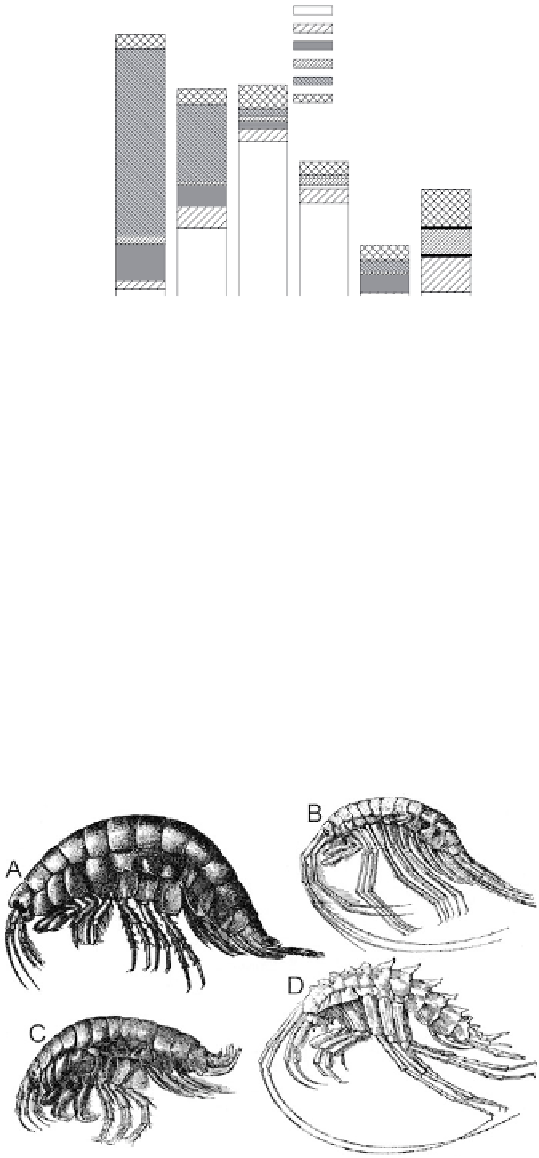Environmental Engineering Reference
In-Depth Information
Endemic teleosts
Cosmopolitan teleosts
Endemic molluscs
Cosmopolitan molluscs
Endemic crustaceans
Cosmopolitan crustaceans
900
800
700
600
500
400
300
200
100
0
Baikal
Tanganyika Malawi
Victoria
Ohrid Great Lakes
FIGURE 10.3
Number of endemic species for some large lakes of the world. The area of
the North American Great Lakes is approximately 10 times greater than that of any of the
other lakes shown (reproduced with permission from Cohen, 1995).
Lake Baikal may be the most studied of the ancient lakes. It has 377 en-
demic crustacean species, 291 of which are amphipods. Figure 10.4 demon-
strates a small part of the diversity in body form that can be found in these
amphipods; this diversity in body form is consistent with differences in rRNA
sequences (Sherbakov
et al.,
1998). In addition, there are 86 endemic species
of turbellarians, 98 endemic mollusks, and 29 endemic species of fish [of
which 26 species are sculpins (Cottoidei); Sherbakov, 1999]. Eighty to 100%
of the species in these groups are endemic. Slightly less than half of the 679
species of diatoms are endemic (Brooks, 1950). As with most large lakes, the
biodiversity is threatened by human-caused pollution (Galaziy, 1980).
FIGURE 10.4
A variety of Gammarids from Lake Baikal, demonstrating diversity of body
form: (A)
Ommatogammarus albinus
, body length up to 25 mm; (B)
Abyssogammarus sar-
matus
, body length up to 63 mm; (C)
Crypturopus pachytus
, body length up to 18 mm;
(D)
Garjajewia cabanisi
, body length up to 80 mm (reproduced with permission from
Kozhov, 1963).







Search WWH ::

Custom Search